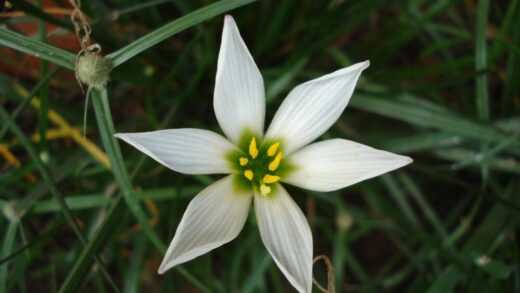The light requirements of the Turk’s cap lily

Understanding and providing the correct light conditions is one of the most fundamental aspects of successfully cultivating the Turk’s cap lily. This particular species has evolved in a woodland environment, a background that dictates its preference for a specific quality and duration of light. Unlike sun-loving perennials that thrive in open, exposed locations, Lilium martagon flourishes in the gentle, filtered light found at the edge of a forest or under the high canopy of deciduous trees. Getting the light right is not just about ensuring survival; it is about creating an environment where the plant can truly thrive, producing the tallest stems, the lushest foliage, and the most abundant display of its elegant, turban-shaped flowers. Failure to meet these light requirements is one of the most common reasons for a lack of vigor and poor flowering in this species.
The ideal light exposure for Turk’s cap lilies is often described as “dappled shade” or “partial shade.” This means the plant should receive a few hours of direct sunlight each day, preferably the gentler morning sun, and then be shielded from the intense, direct sun of the afternoon. A location on the east-facing side of a building or wall, or one situated beneath tall trees with a high canopy that allows flecks of sunlight to filter through, is perfect. This type of lighting provides enough energy for robust photosynthesis without the risk of scorching the leaves or causing the delicate flower colors to fade prematurely.
Too much direct sun, especially in hotter climates, can be detrimental to the health of the plant. The leaves may develop brown, burnt edges, and the overall plant may appear stressed and wilted during the hottest part of the day. The flowers, which are the main attraction, are also susceptible to sun damage; their rich, often subtle, colors can become washed out and faded, and the lifespan of each individual bloom can be shortened. Providing protection from the harsh afternoon sun is therefore crucial for maintaining both the health of the plant and the quality of its floral display.
Conversely, while Turk’s cap lilies are shade-tolerant, they will not perform well in deep, dark shade. If the plant receives too little light, it will become weak and etiolated, meaning it will produce long, spindly stems as it stretches in a desperate search for more light. In such conditions, the plant may fail to produce any flowers at all, or it may produce only a few small, poorly formed blooms. Finding that perfect balance between sun and shade is the key to unlocking the full ornamental potential of this graceful lily.
The ideal balance of sun and shade
Achieving the perfect balance of light for Turk’s cap lilies involves careful observation of the potential planting site throughout the day and across different seasons. The goal is to find a location that receives approximately four to six hours of sunlight per day. Crucially, the timing of this sun exposure matters. Morning sun, from sunrise until early afternoon, is ideal as it is less intense and allows the plant’s foliage to dry from any overnight dew, which helps to prevent fungal diseases. This is followed by shade during the hottest part of the afternoon, which protects the plant from heat stress.
More articles on this topic
Planting under the canopy of deciduous trees is a classic strategy for creating the ideal light conditions. In the spring, before the trees have fully leafed out, the emerging lily shoots receive plenty of bright, direct sunlight to fuel their initial, rapid growth. By the time the summer heat intensifies, the tree’s canopy has filled in, providing the perfect filtered or dappled shade that the lilies crave during their flowering period. This natural, seasonal shift in light intensity perfectly mimics the conditions of their native woodland habitat.
It is also important to consider the “quality” of the shade. The term “dappled shade” refers to the shifting pattern of light and shadow created as sunlight filters through the leaves of overhead trees. This is different from the dense, consistent shade cast by a solid structure or a dense evergreen tree. Turk’s cap lilies perform best in this dynamic, dappled light, which provides them with intermittent bursts of direct sun throughout the day. This type of light is bright enough for vigorous growth but gentle enough to prevent scorching.
In gardens without mature trees, similar conditions can be created by planting on the north or east side of the house, where the structure itself provides afternoon shade. Alternatively, they can be planted among taller shrubs or perennials that can cast a protective shadow during the hottest hours. The key is to be intentional about site selection, recognizing that the specific light exposure a spot receives is one of the most significant factors that will determine the long-term success of the Turk’s cap lily.
Adapting to different climate zones
The specific light requirements of the Turk’s cap lily can vary somewhat depending on the climate zone in which it is being grown. In cooler, more northerly climates where the summer sun is less intense and the days are longer, Lilium martagon can often tolerate more direct sunlight than it would in hotter regions. In these areas, a location that receives sun for a significant portion of the day may be perfectly acceptable and can even lead to more robust growth and a greater number of flowers, as long as the soil remains consistently moist.
More articles on this topic
Conversely, in warmer, more southerly climates, providing adequate shade becomes even more critical. The intense heat and strong sunlight in these regions can quickly scorch the foliage and cause the flowers to fade and drop prematurely. In hot climates, a location that receives only a few hours of gentle morning sun and is in deep shade for the rest of the day is often necessary for the plant’s survival. It is essential for gardeners in these zones to prioritize protection from the afternoon sun.
The amount of moisture available in the soil also interacts with the plant’s light tolerance. A Turk’s cap lily growing in consistently moist, humus-rich soil will be able to withstand more sun exposure without showing signs of stress than a plant in drier conditions. This is because the ample moisture helps to keep the plant’s roots cool and allows it to transpire effectively to regulate its temperature. This highlights the interconnectedness of all the plant’s cultural requirements – light, water, and soil all work together to create a healthy growing environment.
Ultimately, the best guide to whether a Turk’s cap lily is receiving the correct amount of light is the plant itself. A healthy, well-sited lily will have lush, deep green foliage and strong, upright stems. If the leaves are yellowing or have brown, crispy edges, it may be an indication of too much sun. If the stems are weak and floppy and the plant is not flowering well, it is likely not receiving enough light. Observing the plant’s performance and being willing to move it if it seems unhappy is a hallmark of a good gardener.
Light’s effect on flowering and color
The amount of light a Turk’s cap lily receives has a direct and significant impact on both the quantity and quality of its flowers. For a lily to produce an abundant display of blooms, it needs to be able to store a sufficient amount of energy in its bulb from the previous season. This energy is generated through photosynthesis, a process that is entirely dependent on light. Therefore, a plant that receives an adequate amount of light will be able to produce a larger, more vigorous bulb, which in turn will support a greater number of flowers in the following year.
In conditions of insufficient light, the plant will prioritize its survival over reproduction. It will put its limited energy resources into maintaining its leaves and roots, and it may not have enough surplus energy to form flower buds. This is why lilies grown in deep shade often fail to flower. Even if a plant in low light does manage to produce a few flowers, the stem is likely to be weak and the blooms themselves may be smaller and less impressive than those on a plant grown in ideal light conditions.
The intensity of the light can also affect the color of the flowers. The pigments that give the Turk’s cap lily its characteristic dusty rose, pink, or purplish hues can be sensitive to strong, direct sunlight. In very bright, sunny conditions, these colors can appear washed out or faded. The intricate spotting that is often a feature of the petals may also be less pronounced. The more gentle, filtered light of a partial shade location helps to preserve the richness and depth of the flower color, allowing the blooms to be appreciated in their full glory.
Furthermore, the longevity of the flowers is influenced by their light exposure. In the cool, shaded conditions that the plant prefers, each individual flower will last for a longer period of time before it begins to fade. In the heat and stress of a location with too much direct sun, the flowers will wilt and drop much more quickly, shortening the overall duration of the plant’s blooming season. Providing the correct light is therefore not just about getting the plant to flower, but about maximizing the beauty and length of its floral display.



















